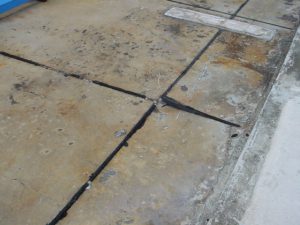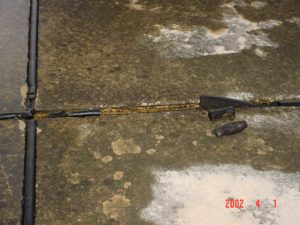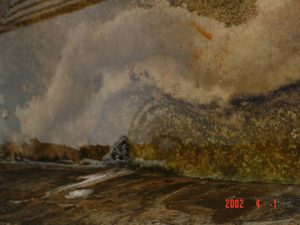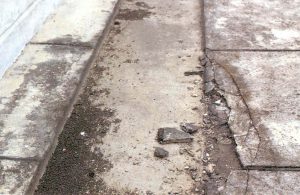Rigid Mineral Wool
Defect and Repair
| Defects | Repair |
| Splitting
Occur at the point of weakness such as joints or corner or roof penetration [12].
|
Replace damage insulation and re-roof the affected portion. [12] |
| Blistering
Often caused by mositure in the roof system, occur in the coating and result in the exposure of felt to weathering. [12]
|
Check and replace affected membrane. Recoat and regravelled. [12] |
| Slippage
Slippage of membranes on conventional, sloping roofs is evidenced by exposed bitumen on higher parts of the roof and piling up of felts on lower ones. It is produced by bitumen having too low a viscosity for the slope and is likely to occur in warm weather when roof temperatures may reach 70°C or more. Viscosity of the bitumen may increase with age enough to stabilize it. Alternatively, it may be possible by some mechanism to secure the membrane to the insulation, which is quite probably stable, or to the deck. It can also occur in protected membrane roofs if the slope and top-surface loading combine to produce a sufficiently high shear stress in the membrane, even though membrane temperatures will probably not exceed 35°C. Blocking, secured to the deck, may be required to prevent it. |
Replace and re-roof the affected portion. |
| Alligatoring
Alligatoring on conventional roof membranes is caused by shrinkage cracking of the top surface bitumen. Eventually it will expose the felts to weathering damage. [12]
|
Replace and re-roof the affected portion. |
| Gravel Scouring
Caused by exposure of roofing membrane to extreme weathering such as high wind or water on protected membrane roofs, insulation will be exposed to weathering once the gravel cover is lost. [12]
|
Replace and re-roof the affected portion. |
Note: For more defects, please refer to the Defect Library.



